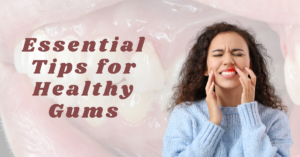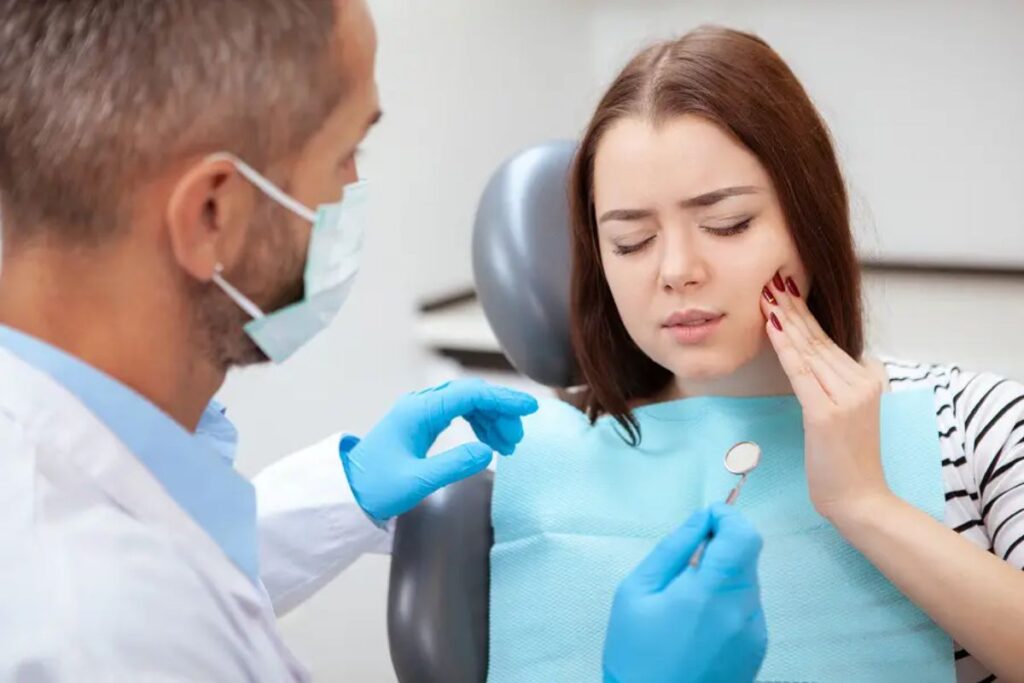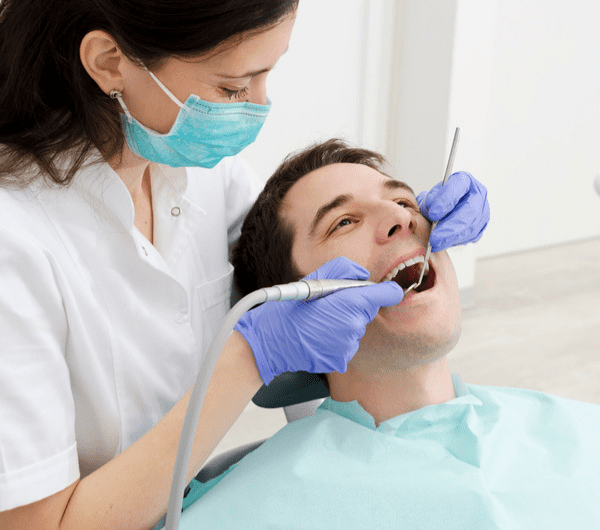- ADA – American Dental Association, an organization of professional dentists within the United States, commonly known for providing public dental health education
- Alloy/Amalgam – compound made up of two or more elements and containing properties not found in the individual elements
- Anesthesia (Local) – medication used to block pain in one area for treatment
- Anesthesia (General) – medication used to induce partial or complete unconsciousness during treatment
- Anterior – refers to teeth or tissues in the front part of the mouth
Dental Dictionary
Dental Dictionary
A
B
- Banding – orthodontic process of fitting and cementing bands to teeth
- Benefit – payment for covered dental services by a third-party insurer
- Bonding – the process of attaching brackets to teeth for braces or restoring teeth with composite resin to repair tooth color or shap
- Braces – orthodontic devices used to reposition teeth over time to correct misalignment, generally consisting of brackets and archwires
- Bridge/Partial Denture – a dental prosthetic device used to replace one or more missing teeth, generally attaches to surrounding teeth or implants for support
- Bruxism – involuntary grinding of the teeth, usually while sleeping, often causing tooth wear, sensitivity, headaches, and jaw pain
C
- CAD/CAM – Computer-Aided Design/Computer-Aided Manufacturing
- Cap – commonly used term for a dental crown
- Cavity – missing tooth structure caused by decay, abrasion, or erosion
- Cavitron – dental tool used in cleaning teeth, uses high-frequency ultrasonic waves
- Complete Denture – set of prosthetic teeth that are used to replace all upper or lower teeth
- Composite Resin – tooth-colored material composed of plastic with small particles of ceramic or glass, generally cured with a chemical catalyst or filtered light
- Cosmetic Dentistry – dental services used to improve appearance, rather than health or function
- Crown – may refer to the visible tooth above the gumline or to a prosthetic dental restoration that replaces part or all of a natural tooth
- Crown Lengthening – surgical manipulation of gum tissue to expose more tooth structure, often used in conjunction with other treatment
Coverage: Benefits available to an individual covered under a dental benefit plan.
Claim: A request for payment under a dental benefit plan; a statement listing services rendered, the dates of services, and itemization of costs. The completed request serves as the basis for payment of benefits.
Claim Form: A form, paper or electronic, used to report dental procedures to a third-party payer in order to file for benefits under a dental benefit program. The paper claim form was developed by the American Dental Association.
D
- DDS – Doctor of Dental Surgery, this degree is equivalent to DMD
- Decay – the destruction of tooth structure
- Dental Implant – small cylinder, generally titanium, implanted into the upper or lower jawbone to anchor a dental appliance or restoration
- Dentistry – medical field characterized by the evaluation, diagnosis, prevention, and treatment of diseases and disorders of the teeth, mouth, gums, jaws, and other oral and maxillofacial areas by a trained and certified professional
- Denture – set of one or more prosthetic teeth
- Diagnostic Cast – impression used to aid in planning treatment
- Diagnostic Imaging – photographs or radiographs taken for the purpose of diagnostic evaluation
- Displaced Tooth – tooth that has grown or shifted into an incorrect placement within the mouth
- DMD – Doctor of Medical Dentistry, this degree is equivalent to DDS
- Dry Socket – painful localized inflammation of a tooth socket after extraction, caused by infection or loss of the blood clot needed for proper healing
E
- Enamel – hard tissue exterior of a tooth, covers the dentin
- Endodontics – dental field concerned with care and treatment of tooth pulp and associated areas
- Endodontist – dental specialist focused on treating disease and injuries of the tooth pulp and associated areas
- Extraction – removal of a tooth
G
- General Anesthesia – the use of medication to induce a controlled unconscious state in a patient during treatment, allows reduced or eliminated sensation of pain and reflexive motion
- Gingiva – also called gum tissue, soft tissue that surrounds teeth within the mouth
- Graft – surgical addition of natural or synthetic tissue to repair or reinforce tissues with defects or deficiency
H
- Health Maintenance Organization (HMO): A legal entity that accepts responsibility and financial risk for providing specified services to a defined population during a defined period of time at a fixed price. An organized system of health care delivery that provides comprehensive care to enrollees through designated providers. Enrollees are generally assessed a monthly payment for health care services and may be required to remain in the program for a specified amount of time.
- Health Insurance Portability and Accountability Act (HIPAA) of 1996: A federal law that includes Administrative Simplification Provisions that require all health plans, including ERISA, as well as health care clearinghouses and any dentist who transmits health information in an electronic transaction, to use a standard format. The HIPAA standard electronic dental claim also requires use of the ADA’s Code on Dental Procedures and Nomenclature code set. Paper transactions are not subject to this requirement
- Hygienist – dental professional who is trained and certified to perform dental cleanings, scaling and root planing, and other functions, provides patient education, and may administer local anesthetic or nitrous oxide
I
- Immediate Denture – teeth replacement prosthetic designed to be placed as soon as teeth are removed, generally will be replaced with permanent denture once healing is complete
- Immediate Implant Placement – dental implant placed during the same visit as the extraction of the tooth it replaces
- Impacted Tooth – a tooth that is partially or fully unable to erupt and remains embedded in soft tissue or wedged against bone or another tooth
- Implant – to insert or graft material into tissue
- Implant, Dental – small metal cylinder, usually titanium, placed in or on jawbone, used in conjunction with dental prosthetic as a tooth replacement solution
- Implant Dentistry – field of study and practice involving the surgical placement and maintenance of dental implants and implant-anchored tooth replacement prosthetics
- Inlay – filling made outside the tooth, then cemented or bonded in place to restore lost structure
- interocclusal – between upper and lower teeth of the bite
- Intracoronal – inside the tooth crown
- Intraoral – inside the oral cavity
- Intraoral Camera – specially designed camera for use in photographing inside the mouth, used for diagnostic purposes
J
- Jaw – common term referring to maxilla or mandible bone
L
- Laminate Veneer – thin material, generally tooth-colored, used to cover the front of a healthy tooth to restore the appearance from discoloration, damage, misalignment, or other such cosmetic issues
- Lesion – tissue injury, generally due to trauma, infection, or illness
- Local Anesthesia – medication used to block nerve impulses to provide partial or complete elimination of pain during treatment
M
- Malocclusion – improper alignment of upper and lower jaw or teeth
- Mandible – lower jaw
- Maxilla – upper jaw
- Mouth Guard – appliance used to protect the mouth and teeth during rigorous activity, such as sports
N
- NSAID – analgesic medication, stands for Non-Steroidal Anti-Inflammatory Drug
- Night Guard – appliance used to protect teeth and jaw during sleep in cases of grinding
- Nitrous Oxide – also known as laughing gas, an odorless inhalant that causes a mild sedative effect
O
- Onlays – prosthetic restoration that covers the occlusal (biting/chewing) surface of a tooth, but not the whole tooth
- Oral – referring to the mouth
- Oral cavity – the inside of the mouth
- Oral hygiene – establishment and maintenance of habits designed to keep the mouth, gums, and teeth healthy
- Orthodontics – dental specialty concerned with the diagnosis, prevention, and treatment of malocclusion and other neuromuscular or skeletal abnormalities of the orofacial structure
- Orthodontist – dental specialist who focuses on the diagnosis, prevention, and treatment of malocclusion and other neuromuscular or skeletal abnormalities of the orofacial structure
- Overbite – orthodontic issue, when upper front teeth significantly overlap the lower
P
Patient: An individual who has established a professional relationship with a dentist for the delivery of dental health care. For matters relating to communication of information and consent this term includes the patient’s parent, caretaker, guardian, or other individual as appropriate under state law and the circumstances of the case.
- Palate – hard and soft tissues that form the roof of the mouth, separating the oral and nasal cavities
- Partial denture – prosthetic device that is used to replace one or more missing teeth, but not the full upper or lower set, may be fixed or removable, also known as a bridge
- Pediatric dentist – dental specialist focusing on the dental treatment of infants, children, and adolescents
- Pediatric dentistry – dental specialty that focuses on preventive care and treatment for infants, children, and adolescents, including care for special needs patients
- Periodontal – refers to the tissues that surround and support the teeth
- Periodontal disease – includes gingivitis and periodontitis, inflammation of the periodontal tissues, may include the development of periodontal pockets, bone loss, and tooth loss can be treated but not cured
- Periodontal surgery – surgery to treat diseased gum tissue in the mouth
- Periodontics – dental specialty focusing on placement of dental implants and the prevention, diagnosis, and treatment of diseases that affect the tissues that surround and support the teeth
- Periodontist – dental specialist who focuses on placement of dental implants and the prevention, diagnosis, and treatment of diseases that affect the tissues that surround and support the teeth
- Periodontitis – inflammation of the periodontal tissues, may include the development of periodontal pockets, bone loss, and tooth loss, can be treated but not cured
- Permanent teeth – the second and final set of teeth, also known as adult teeth, usually 32 in total
- Plaque – soft, sticky substance that can accumulate on teeth, generally made up of food debris and bacteria
- Preventive dentistry – aspect of dentistry that focuses on the promotion of good oral hygiene habits to protect oral health and reduce or prevent the development of oral health issues
R
- Reimplantation – reinsertion of tooth into its socket following trauma that partially or completely removed it
- Retainer – appliance used to ensure teeth do not return to prior misaligned state following orthodontic treatment
- Root – portion of the tooth that attaches the tooth to the gums and socket
- Root Canal – pulp cavity inside the tooth root
- Root Canal Therapy – treatment of disease or injury to the tooth pulp, generally involves the removal of part or all of the pulp and replacement with inert material
- Root Planing – a procedure used in the treatment of periodontal disease, involves deep cleaning of teeth at the roots to remove calculus and other substances
S
- Scaling – professional deep cleaning to remove plaque, calculus, and surface stains from teeth, a common treatment for periodontal disease
- Sealant – thin, resinous material that is applied to occlusal surfaces of rear molars to help prevent decay
- Sinus Graft – bone graft on the maxillary sinus to allow the placement of dental implants
- Sleep Apnea – interruptions in breathing during sleep due to airway collapse
- Schedule of Benefits: A listing of dental services and the maximum benefit amounts an insurer will pay for a given service. Specificity will vary by benefit plan.
- Service Corporations: Dental benefit organizations established under not-for-profit state statutes for the purpose of providing health care coverage, e.g., Delta Dental Plans, Blue Cross and Blue Shield Plans.
U
- Usual, Customary, and Reasonable (UCR) Fee – term meaning that a fee for a given procedure has been set according to a common consensus on its rate
- Unerupted Tooth – tooth that has not yet emerged from the gum into the mouth
V
- Veneer – thin facing bonded onto the front surface of a tooth to improve the appearance
W
- Wisdom Teeth – third and final set of molars in the rear of the mouth, generally erupt between ages 18 and 25.
- Worker’s Compensation: A benefit paid to an employee who suffers a work-related injury or illness.
Dental Articles In Charlotte

Financing Your Smile: Affordable Options for Dental Treatments
Dental care is an investment in your overall health and well-being. However, the cost of certain procedures can be a barrier for many people. Fortunately, there are various financing options available to help you achieve the smile you deserve without breaking the bank.
Why Consider Financing Dental Treatments?
- Affordability: Financing can make dental treatments more accessible by spreading out the costs over time.
- Convenience: Many financing plans offer flexible payment options, making it easier to manage your budget.
- Improved Oral Health: By accessing affordable dental care, you can address dental issues promptly and prevent them from escalating into more serious problems.
Popular Financing Options
- Dental Insurance:While not technically financing, dental insurance can help cover a portion of the cost of certain dental treatments.
- Credit Cards:Some dental practices accept credit cards, allowing you to spread out payments over time. However, be mindful of interest rates and potential fees.
- Dental Financing Plans:Many dental practices offer in-house financing plans with competitive interest rates and flexible terms.
- Third-Party Financing Companies:Companies like CareCredit and Lending Club specialize in financing medical and dental treatments.
How to Choose the Right Financing Option
- Evaluate Your Budget:Consider your monthly income and expenses to determine how much you can comfortably afford for dental payments.
- Compare Interest Rates:Compare the interest rates offered by different financing options to find the most affordable choice.
- Consider Terms and Conditions:Review the terms and conditions of each financing plan to understand the repayment schedule, fees, and any other relevant details.
- Consult with Your Dentist:Your dentist can provide guidance and recommendations based on your specific needs and financial situation.
Tips for Managing Dental Debt
- Create a Budget:Develop a budget to track your income and expenses, ensuring you can make your dental payments on time.
- Prioritize Payments:Make dental payments a priority in your budget to avoid late fees and penalties.
- Consider Debt Consolidation: If you have multiple dental debts, explore debt consolidation options to simplify your payments and potentially lower your interest rate.
By understanding the available financing options and taking steps to manage your dental debt responsibly, you can achieve a healthy and beautiful smile without compromising your financial stability.

Dentures: A Comprehensive Guide
Dentures are a common solution for people who have lost teeth due to tooth decay, gum disease, or injury. They can significantly improve a person’s quality of life by restoring chewing function, speech, and appearance. This blog post will provide you with valuable information about dentures, including different types, the fitting process, care and maintenance, and potential challenges.
Types of Dentures
There are two main types of dentures:
- Full Dentures: These are used to replace all of the teeth in a jaw. They can be either immediate or conventional. Immediate dentures are fitted on the same day that teeth are extracted, while conventional dentures are fitted after the gums have healed.
- Partial Dentures: These are used to replace some of the teeth in a jaw. They can be either fixed or removable. Fixed partial dentures, also known as bridges, are permanently attached to natural teeth or dental implants. Removable partial dentures are held in place by clasps or attachments.
The Fitting Process
Fitting dentures involves several steps:
- Impression Taking: Your dentist will take an impression of your mouth to create a model of your jaw and teeth.
- Try-In: The dentist will fit a temporary denture to ensure proper fit and function.
- Adjustments: The dentist will make any necessary adjustments to the denture before delivering the final product.
Care and Maintenance
Proper care and maintenance are essential for the longevity and comfort of your dentures. Here are some tips:
- Clean Your Dentures Daily: Brush your dentures with a soft-bristled toothbrush and denture cleaner.
- Soak Your Dentures Overnight: Soaking your dentures in a denture cleanser overnight can help remove stains and bacteria.
- Handle Your Dentures with Care: Avoid dropping or banging your dentures, as this can damage them.
- See Your Dentist Regularly: Visit your dentist for regular check-ups to ensure your dentures fit properly and are in good condition.
Potential Challenges with Dentures
Wearing dentures can present some challenges, including:
- Soreness and Irritation: It may take some time for your gums to adjust to wearing dentures.
- Difficulty Eating: Chewing with dentures may require some practice.
- Speech Difficulties: Dentures can affect your pronunciation.
- Loose Fit: Over time, dentures may become loose or uncomfortable.
If you are experiencing any of these problems, it is important to consult with your dentist. They can make adjustments to your dentures or recommend alternative solutions.
Conclusion
Dentures can be a valuable investment in your oral health and overall well-being. By understanding the different types of dentures, the fitting process, and proper care and maintenance, you can ensure that your dentures provide you with many years of comfort and function.
Would you like to know more about the costs associated with dentures, or perhaps discuss alternative options like dental implants?

Celebrate National Gum Care Month: Essential Tips for Healthy Gums
September is National Gum Care Month, a time to raise awareness of the importance of gum health and take proactive steps to prevent periodontal disease. With nearly 47% of U.S. adults affected by gum disease, it’s crucial to understand the risks and know how to keep your gums healthy.
Why Gum Health Matters
Gum health is often overlooked, but it plays a vital role in your overall oral hygiene. Gum disease, also known as periodontal disease, can lead to serious complications if left untreated, including tooth loss and even an increased risk of heart disease. That’s why taking care of your gums is as important as brushing and flossing your teeth.
Recognize the Warning Signs
Early detection is key to preventing gum disease. Be on the lookout for these common warning signs:
- Puffy, swollen, or red gums
- Gum pockets or receding gums
- Chronic bad breath
If you notice any of these symptoms, it’s time to take action.
Top Tips for Healthy Gums
Here are some simple yet effective tips to maintain healthy gums and prevent periodontal disease:
- Brush Twice a Day: Use a soft-bristled toothbrush and fluoride toothpaste to brush your teeth at least twice a day. Don’t forget to brush along the gumline where plaque tends to build up.
- Floss Daily: Flossing is crucial for removing food particles and plaque between your teeth, areas your toothbrush can’t reach. Make it a daily habit to prevent gum inflammation and disease.
- Use Mouthwash: Antimicrobial mouthwashes can help reduce plaque and prevent gum disease. Consider incorporating a mouthwash into your daily routine for extra protection.
- Eat a Nutritious Diet: A balanced diet rich in vitamins and minerals supports gum health. Include plenty of fruits, vegetables, and water in your diet to strengthen your gums.
- Regular Dental Checkups: Regular visits to the dentist for cleanings and checkups are essential for detecting and treating gum disease early. Your dentist can identify problems before they become serious.
Don’t Wait—Protect Your Gums Today!
Taking care of your gums is not just about maintaining a beautiful smile; it’s about preserving your overall health. National Gum Care Month is the perfect opportunity to start paying closer attention to your gum health. Schedule your dental checkup today and take the first step toward preventing gum disease and ensuring a healthy, confident smile.

Shield Your Smile: A Comprehensive Guide to Gum Health
Gum disease, often a silent culprit, can lead to serious oral health problems if neglected. But fear not! With the right knowledge and care, you can shield your smile from this unwelcome intruder. Let’s dive into the world of gum health.
The Cornerstone of Gum Health: Daily Oral Hygiene
Your daily oral care routine is the first line of defense against gum disease. Here’s how to make the most of it:
- Brush like a pro: Use a soft-bristled toothbrush and fluoride toothpaste. Gently brush the outer, inner, and chewing surfaces of your teeth, as well as your tongue. Aim for two minutes, twice a day.
- Floss daily: Yes, we know it can be a hassle, but flossing is crucial for reaching those tight spots between your teeth where plaque loves to hide.
- Mouthwash magic: A good mouthwash can help kill bacteria and freshen your breath. Look for products with fluoride.
- Tongue cleaning: Don’t forget your tongue! Bacteria can hide there too, contributing to bad breath and potential gum problems.
Regular Check-ups: Your Dental Ally
Even with diligent home care, professional cleanings are essential. Regular check-ups allow your dentist to:
- Detect early signs: Catching gum disease early means easier and less invasive treatment.
- Remove tartar: Plaque that hardens into tartar can only be removed by a dental professional.
- Provide guidance: Your dentist can offer personalized advice on oral hygiene and answer any questions you have.
Nourish Your Gums from Within: Diet and Lifestyle
What you eat and drink, as well as your overall lifestyle, can significantly impact your gum health.
- Eat your greens: Fruits, vegetables, and whole grains are packed with vitamins and minerals that support healthy gums.
- Limit sugary treats: Excessive sugar can contribute to plaque buildup.
- Hydrate: Drinking plenty of water helps wash away food particles and keeps your mouth moist.
- Kick the habit: Smoking harms your gums and slows down healing.
- Manage stress: Stress can affect your overall health, including your oral health. Find healthy ways to manage stress.
Remember: Everyone’s oral health is unique. What works for one person might not work for another. If you have concerns about your gum health, don’t hesitate to consult your dentist.
By combining good oral hygiene practices, regular dental check-ups, and a healthy lifestyle, you can significantly reduce your risk of gum disease and enjoy a lifetime of healthy smiles.
Restore your smile with confidence! Contact Steele Creek Smiles Dentistry today at (704) 587-1010 to schedule a consultation and explore your options for dental implants or dentures. Let our experienced team help you achieve a healthy and beautiful smile.

Teeth Whitening Charlotte NC | Steele Creek Smiles
Are you dreaming of a dazzling smile that lights up the room? You’re not alone! Teeth whitening has become increasingly popular, but with so much information out there, it can be tough to separate fact from fiction. Let’s clear up some common misconceptions and help you decide on the best teeth whitening option for you.
Myth 1: Over-the-Counter Whitening Products Are Just as Effective as Professional Treatments
While at-home kits can provide some results, they often fall short compared to professional-grade whitening performed by a dentist. Our in-office treatments use higher concentrations of whitening agents and advanced techniques to deliver dramatic results in a shorter amount of time.
Myth 2: Teeth Whitening Damages Enamel
When performed by a qualified dentist, teeth whitening is safe and does not damage enamel. We use gentle, proven methods to brighten your smile without compromising the health of your teeth.
Myth 3: Whitening is Only for People with Naturally White Teeth
Everyone can benefit from teeth whitening, regardless of their natural shade. Whether your teeth are slightly stained or significantly discolored, we can help you achieve a brighter smile.
At-Home vs. Professional Teeth Whitening
- At-Home Whitening: Convenient and affordable, at-home kits offer a gradual whitening process. However, results may be less dramatic and take longer to achieve.
- Professional Whitening: Delivers faster, more noticeable results. Our in-office treatments are customized to your specific needs and supervised by a dental professional for optimal safety and efficacy.
Achieve Your Dream Smile with Steele Creek Smiles
Ready to unveil your brightest smile?
Contact Steele Creek Smiles today to schedule a consultation. Our experienced team will assess your teeth and recommend the best whitening option for you. Don’t wait any longer to boost your confidence and show off your stunning smile!

Emergency Dentist: How to Find Quick Relief for a Chipped Tooth in Adults
A chipped tooth can cause extreme discomfort and pain, affecting your ability to eat, speak, and carry out your daily routine. Some common signs and symptoms of a chipped tooth include sharp pain when biting down, sensitivity to hot or cold foods and drinks, jagged or rough edges on the tooth, and swelling or bleeding of the gums around the affected tooth. If you experience any of these symptoms, it is crucial to seek immediate dental help to prevent further damage and potential infection.
Finding an Emergency Dentist: Tips for Locating the Best Professional for Fast Relief
When dealing with a chipped tooth, finding an emergency dentist who can provide quick relief is paramount. Start by calling your regular dentist’s office, as they may have emergency slots available. If they are unavailable or don’t offer emergency services, consider searching online for emergency dentists in your area. Look for dental clinics that specialize in emergency care and have a reputation for providing fast and efficient service. Reading online reviews and asking for recommendations from friends or family can also help you find a reliable emergency dentist.
First Aid for a Chipped Tooth: Temporary Solutions to Alleviate Pain and Protect the Tooth until Dental Treatment
While waiting for your emergency dental appointment, there are several first aid measures you can take to alleviate pain and protect the chipped tooth. Rinse your mouth with warm saltwater to reduce any swelling and cleanse the area. Apply a cold compress to the affected area to reduce pain and inflammation. Avoid eating hard or crunchy foods that can further damage the tooth. If the chipped tooth has a sharp edge, cover it with dental wax or sugarless gum to protect your tongue and cheeks from cuts or abrasions. It is important to note that these first aid measures are temporary and should not substitute proper dental treatment.
Keep in mind that a chipped tooth is a dental emergency that requires immediate attention from a professional. If left untreated, a chipped tooth can lead to infections or further damage, affecting the overall health of your mouth. Seeking help from an emergency dentist ensures that you receive the necessary treatment and relief promptly.
If you ever find yourself in a situation where you have a chipped tooth, recognize the signs and symptoms, and seek immediate help. Finding a reliable emergency dentist who can provide fast relief is essential. In the meantime, take temporary measures to alleviate pain and protect the tooth until you receive professional dental treatment. Remember, quick action is crucial to preserving your oral health and preventing further complications.
Accepted Insurance Plans at Steele Creek Smiles










*We also accept and file insurances apart of the Zelis, Connection, and Dentemax Dental Networks. For a comprehensive list of providers, please click here.
If you do not see your in-network dental provider listed above, please let us know. We will do our best to work with any insurance providers our patients carry.


